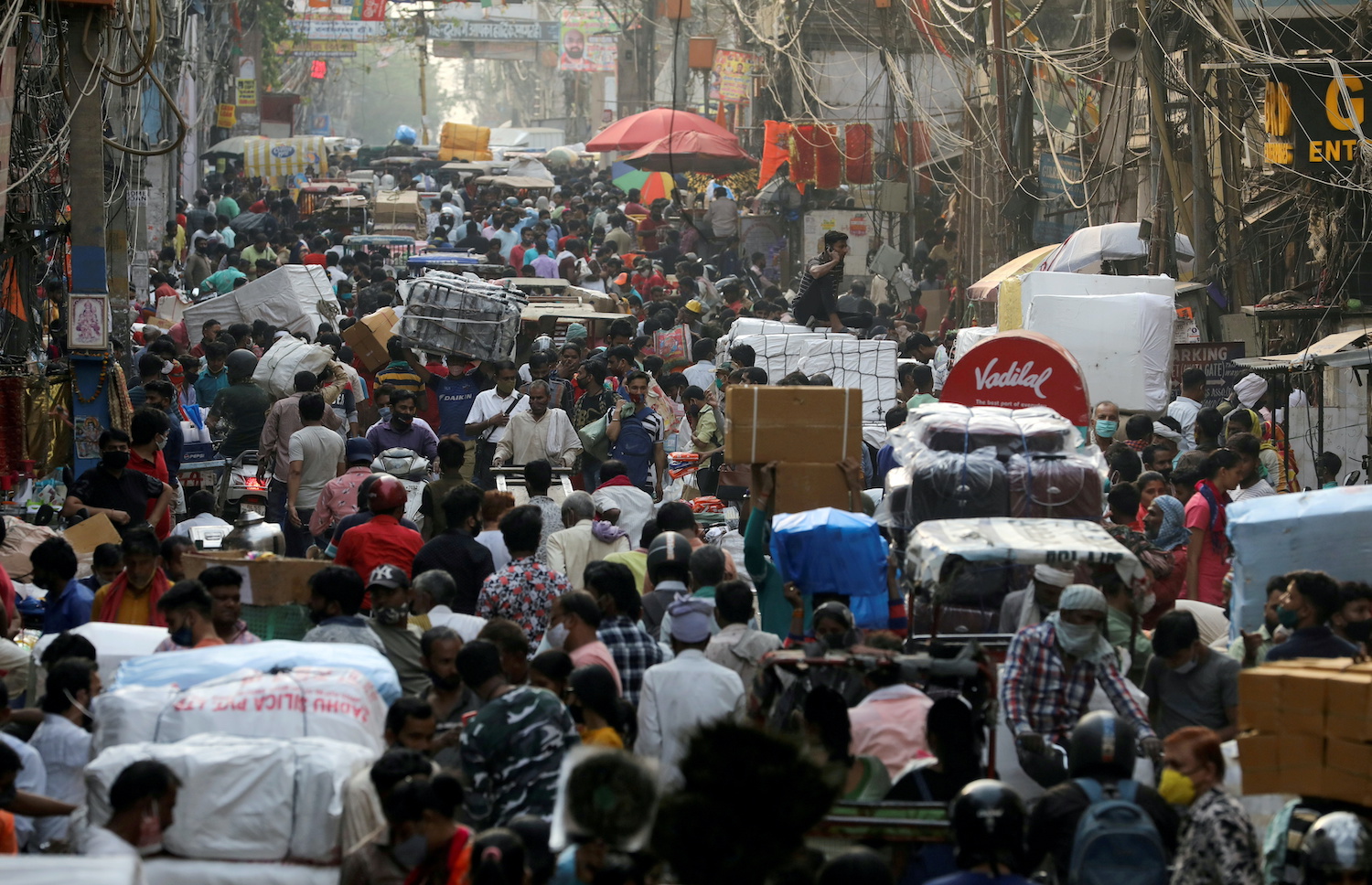India’s services industry expanded for a second straight month in September, bolstered by improved domestic demand and easing COVID-19 restrictions, pushing firms to hire more employees for the first time in nearly a year, a private survey showed.
The IHS Markit Services Purchasing Managers’ Index eased to 55.2 in September from August’s 18-month high of 56.7, but stayed comfortably above the 50-mark separating growth from contraction. Employment also improved with firms reporting an increase in hiring after nine months of job losses.
“Indian companies continued to benefit from a recovery in demand as the pandemic receded further and restrictions were lifted,” said Pollyanna De Lima, economics associate director at IHS Markit.
But there was another decline in outstanding business and the rate of new job creation was fractional as firms handled increased demand with the existing workforce while also running down backlogs of work, said De Lima, adding that the recovery in employment is not guaranteed.
Exports remained steady at US$33.4 billion in September, while a higher oil import bill pushed total imports to $56.4 billion – the largest on record.
“Data from other high-frequency indicators continue to signal a recovery that is gaining momentum, and becoming more broad-based,” Rahul Bajoria, chief economist at Barclay’s Investment Bank, said.
“It continues to be led by manufacturing, even as services lag the rebound. Trade volumes are now above pre-pandemic levels, freight traffic is holding up, and tax revenues are rising. Moreover, the broader economy is likely getting support from the tailwinds of better export demand, some pent-up consumption growth and inventory rebuilding. We maintain our FY21-22 GDP growth forecast of 10.2% year-on-year,” he said.
For the fiscal year to date – from April to September – sustained growth in imports and exports has pushed both past pre-Covid levels in 2019. But the stronger export performance has kept the trade deficit (US$78.8 billion) below 2019 levels ($88.9 billion).
Bajoria said high commodity prices and recovering domestic demand were likely to keep the trade deficit elevated in the coming months.
“Data released earlier showed India posting a large current account surplus of $6.5bn in Q2 2021, helped by robust exports and strong capital inflows. Overall, we maintain our balance of payment surplus forecast of $50bn for the fiscal year FY2021-22.”
He expected the Reserve Bank of India “to acknowledge the favorable macro developments by increasing its growth forecasts and reduce its inflation projections” and to keep policy rates unchanged. But he said it could signal a potential shift in policy at its meeting in December.
Concern on Inflation
However, economists polled last week by Reuters said they expect elevated inflation to hold or accelerate. Many feared India’s economic recovery from pandemic-related shutdowns could be delayed further over the six months left in the current fiscal year.
Price pressures in the world’s second-most populous country have soared because of rising fuel prices, but the RBI is not expected to raise interest rates until at least the beginning of the next financial year, in April-June 2022.
With lingering concerns about risks to growth, that leaves the RBI slightly behind its emerging market peers, who are already raising rates.
The poll conducted from Sept 27 to Oct 4, tipped year-on-year economic growth in Asia’s third-largest economy at 7.8%, 6.0% and 5.8% for Q3, Q4 and Q1 2022 respectively.
That follows a 20.1% expansion in the April-June quarter, the highest since the mid-1990s, which was helped by a very low base – the start of the pandemic in the prior year.
Gross domestic product (GDP) growth is forecast to average 9.2% this fiscal year. Next financial year, growth is seen at 9.7% and 7.1% for the first two quarters and at 6.5% and 6.4% for the final two quarters, averaging 7.0% during 2022/23.
Those forecasts are largely unmoved from a July poll.
RBI Anxious to Boost Growth
Asked about the greater risk to those numbers for the remainder of the fiscal year, 23 of 34, or over two-thirds of respondents, said a delayed recovery with limited downside. Eight said a strong recovery followed by an upgrade, and the remaining three said weak and prone to further downgrades.
“But with inflation expected to remain elevated … persisting with ultra-accommodative monetary policy when the economy is in a recovery phase could lead to stagflation, impacting the recovery itself,” Kunal Kundu at Societe Generale said.
Inflation was forecast to be well above RBI’s medium-term target of 4% but was projected to remain below the 6% upper threshold until at least end-2024, according to the poll.
The RBI has been vocal about its intention in helping the government bolster growth and said policy support from all sides is required to nurture a nascent and hesitant recovery.
“It will be a long while yet before financial conditions start to tighten in earnest, and even longer before policy rates are raised. Rate hikes will come onto the agenda when the economy should be closer to health,” Shilan Shah at Capital Economics said.
“The big picture is that policy will remain very accommodative for several months yet.”
But the Indian stock market appears to be unfazed at the uncertainties about the pace of the recovery, with share prices repeatedly reaching record highs.
Investors have flocked to Indian shares as businesses and mobility recuperated from the devastating second Covid wave in April-May more quickly than expected.
The jobless situation has also improved with major restrictions lifted. Most respondents said there was a low or very low risk unemployment would rise over the coming year.
• By Jim Pollard and Reuters.
ALSO SEE:
India looks to infrastructure for economic multiplier effect
Second Covid wave dents India’s rebound but analysts hopeful
India commits to farmers, announces sops to revive growth
























